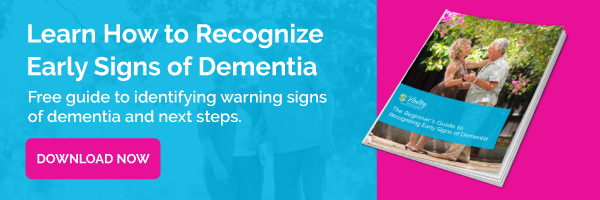If you’ve been researching memory care for your loved one then by now you likely know the basics: that these communities are designed just for those individuals living with Alzheimer’s disease or another type of dementia. They feature specially-trained staff, personalized support, 24-hour supervised care, and a safe, comforting environment. But how exactly do memory care communities help your loved one to thrive? We can’t speak for everyone, but here’s what daily life is really like in memory care with us.
Engagement-Focused Memory Care
Our Vital Brain Program is an engagement-focused philosophy that’s founded on the belief that everyone has an innate ability to learn and succeed no matter the degree of cognitive impairment. That’s why we focus on what our memory care residents can do or want to do – not what they have lost – so your loved one can live their best life regardless of where they’re at in the disease.
Key components of our Vital Brain Program include:
- Opportunities to build cognitive strength
- Learning and experiencing new things
- Practicing stress reduction

Daily Life in Memory Care
We believe the environment in memory care serves as the foundation for daily life. Our communities feature a neighborhood concept that’s secure and specifically designed for independence, engagement, and success, with lighting and colors chosen to be calming. The private or companion apartments are lovely, and there is plenty of access to fresh air and sunshine.
Each day your loved one will have numerous ways to engage their brain through cognitive health programs and creative outlets such as art and music. We offer social activities and amenities that encourage connection with others as well as enrichment opportunities in small group settings.
It’s common for those with Alzheimer’s disease or other types of dementia to struggle with stress and agitation. We find that spending time in nature can help with stress reduction. Some of our communities feature walking paths, conservation spaces, and meditation ponds to offer a sense of calm, comfort, and relaxation plus meditation classes to help as well.
As such, a typical daily schedule in our memory care communities may have options like this:
| 9:30 a.m. | Visiting Lecture – Art Deco Architecture | Creative Art Storytelling |
| Noon | Mindful Meditation – Energize | Spanish Class |
| 3 p.m. | Virtual Art | Digital Photography Class |
| 4 p.m. | Podcast Club | Music Appreciation in the Courtyard |
| 6:30 p.m. | Using FaceTime, Skype, and Google Chat | Mindful Meditation – Relaxation |
Your loved one will also be able to enjoy a dining experience that not only features chef-prepared meals that are as nutritious as they are delicious but also promotes independence. We do that by offering finger foods and meal selections that are easy to chew, easy-to-grip cups and utensils, and the setting is comfortable and relaxed. Dining assistance is also available for your loved one if needed.
But helping your loved one thrive each day also includes compassionate care from our specially-trained team, which includes personalized support with bathing, dressing, and other daily tasks, medication assistance, and services such as housekeeping, laundry, and transportation.
Check out our The Beginner’s Guide to Recognizing Early Signs of Dementia to learn more. Or, contact us today to schedule your virtual tour!



